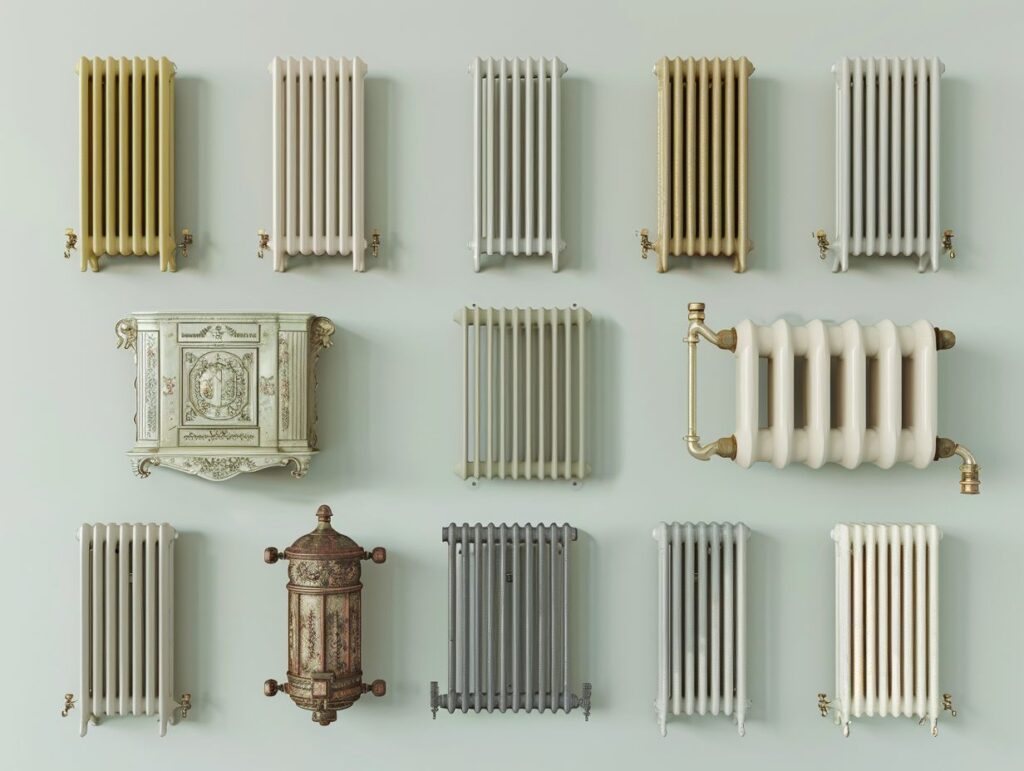Traditional radiators have long been regarded as a fundamental component of heating systems, offering a reliable source of warmth and comfort in residential and commercial spaces.
In this discussion, you will delve into the different categories of traditional radiators, encompassing panel, column, and towel radiators, alongside an examination of the materials commonly used in their construction, such as cast iron, steel, and aluminium.
Explore the key considerations that should guide your selection of a traditional radiator, including maintenance requirements and best practices. Additionally, gain insight into common issues that may arise with traditional radiators and effective troubleshooting techniques to address them.
Key Takeaways:
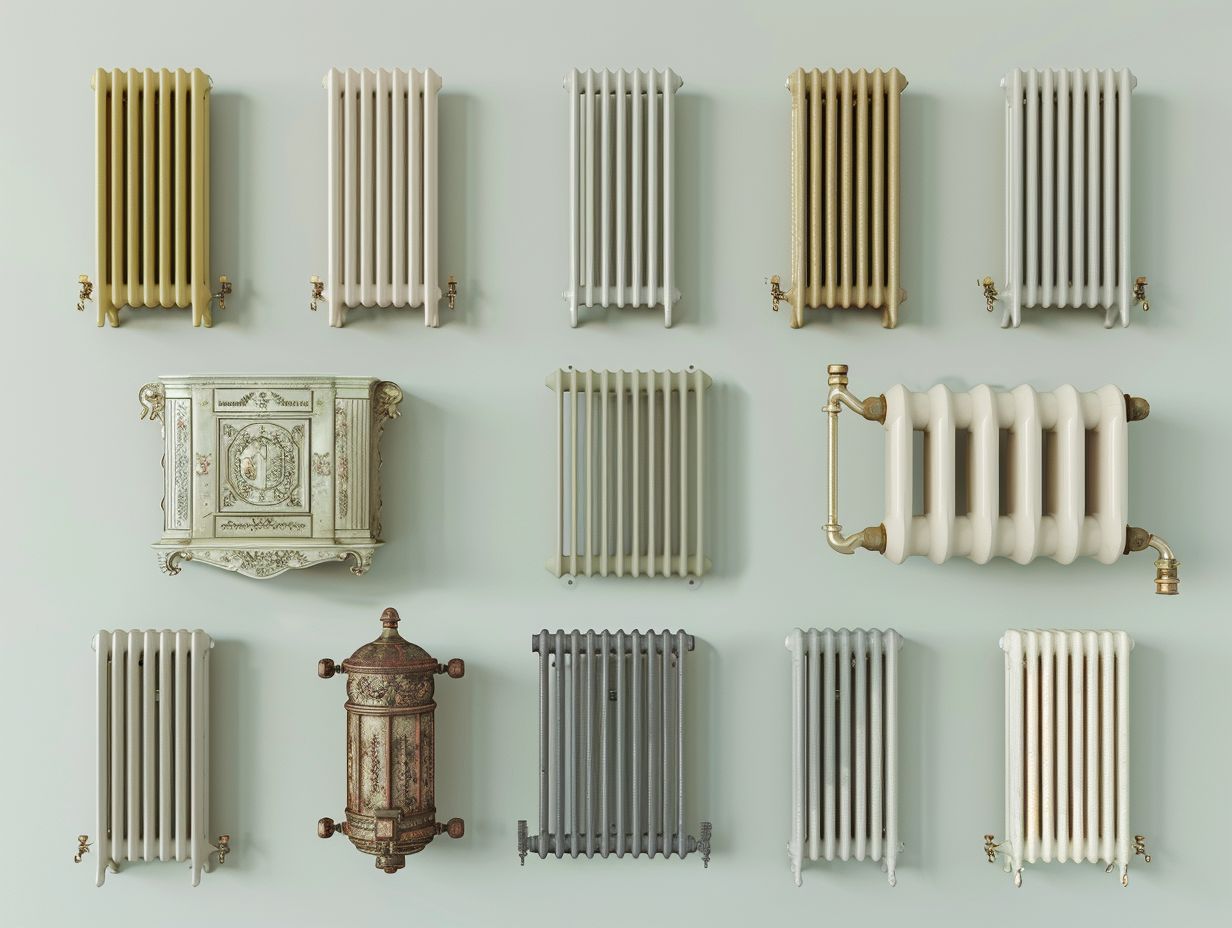
- Traditional radiators come in various types, including panel, column, and towel radiators, each offering unique benefits and styles for heating a home.
- When choosing a traditional radiator, consider factors such as size and heat output, design and style, and installation requirements to ensure the best fit for your space and needs.
- Proper maintenance and care, such as regular cleaning and painting, can help extend the lifespan of traditional radiators and troubleshoot common issues that may arise.
Types of Traditional Radiators
Different types of traditional radiators are available, each providing a distinct design and heating solution. Popular options include Column radiators such as Princess and Ancona, which feature elegant columnar structures designed for efficient heat distribution.
Panel Radiators
Panel radiators are a type of traditional heating device that offers a stylish and space-saving design while providing adequate heat output to heat a room effectively. They are commonly installed on the walls of rooms, making them ideal for spaces where floor area is limited.
The slim profile of panel radiators allows them to blend seamlessly into any room decor without taking up much space.
Due to their efficient heat distribution technology, panel radiators can effectively heat small to medium-sized rooms evenly and quickly. This makes them a popular choice for bedrooms, living rooms, and offices.
Panel radiators are renowned for their energy efficiency, as they can retain and emit heat effectively, resulting in lower energy bills for homeowners.
Column Radiators
When considering heating solutions, column radiators are a timeless option to explore. These radiators boast a vintage design with multiple columns that not only elevate heat output but also bring an air of sophistication to any space.
Along with their visual appeal, column radiators are highly efficient in distributing heat evenly throughout the room.
For instance, the Ancona model offers a contemporary reinterpretation of the classic column radiator, making it an excellent choice for modern interiors seeking a fusion of traditional elegance and contemporary flair.
Conversely, the Duchess model exudes a more lavish and intricate aesthetic, making it perfect for spaces looking to achieve a luxurious and refined atmosphere.
Whether your preference leans towards a minimalist or extravagant aesthetic, column radiators present a versatile heating solution that seamlessly merges style with functionality.
Towel Radiators
Towel radiators are a favoured option for bathrooms, as they offer both heating functionality and a convenient spot to hang towels for added warmth. These radiators blend practicality with style when it comes to bathroom heating solutions.
Their dual functionality makes them a flexible addition to any bathroom, providing not just a heat source but also a space-saving option to keep towels dry and comfortable. With effective heat distribution, towel radiators ensure that your towels are warm and waiting for you after each shower or bath.
Available in a range of designs and finishes, from contemporary and sleek styles to traditional and sophisticated options, they allow you to discover the ideal match for your bathroom decor.
Materials Used in Traditional Radiators
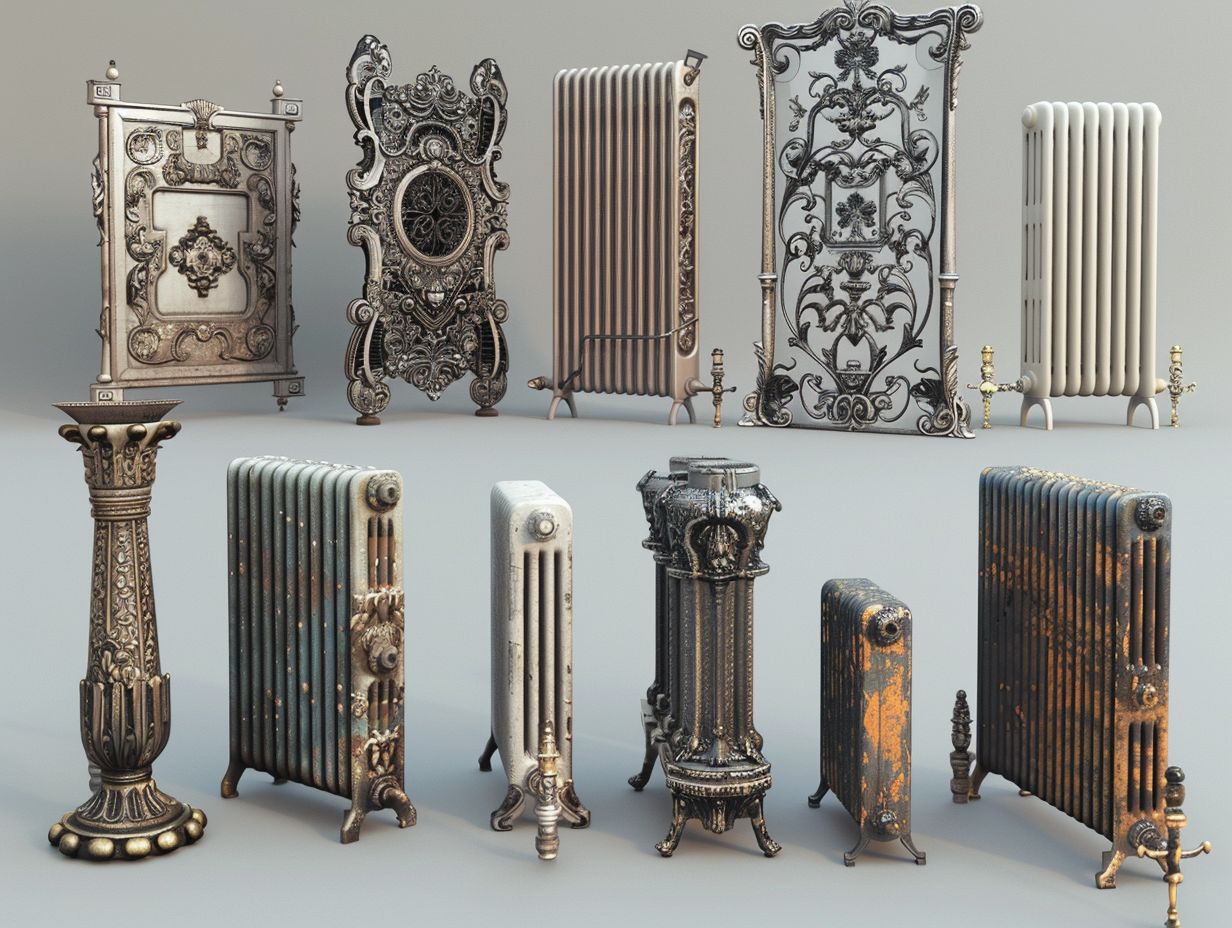
When selecting traditional radiators, it is important to consider a variety of materials to guarantee durability and efficient heat distribution. Common materials used in crafting radiators include Cast Iron, Steel, and Aluminium, with each material offering distinct properties that cater to different heating solutions.
Cast Iron
Cast Iron radiators are well-known in the industry for their high-quality craftsmanship and longevity, often accompanied by a lifetime guarantee. These radiators serve as a timeless heating solution that combines enduring performance with classic aesthetics.
The construction of Cast Iron radiators is robust and durable, ensuring they can withstand the test of time while maintaining optimal efficiency.
Their timeless design complements a range of interior styles, from traditional Victorian houses to contemporary industrial lofts, bringing a touch of sophistication and charm to any environment.
The adaptability of Cast Iron radiators allows them to seamlessly connect with various decor schemes, making them a versatile choice for both residential and commercial spaces.
Steel
Steel radiators provide a modern take on traditional heating options, merging timeless design features with strong heat emission capabilities. These radiators are well-liked for their polished appearance and effectiveness in heating up rooms.
Their modern design enables them to blend effortlessly into both contemporary and traditional interiors, bringing a sense of elegance to any space.
Thanks to their flexible shapes and sizes, steel radiators can be easily tailored to complement any living area, offering not just functional heating solutions but also elevating the overall visual appeal.
The substantial heat output of these radiators ensures rapid and efficient heating, making them a perfect selection for individuals seeking warmth and comfort during colder seasons.
Aluminium
In terms of heating solutions that demand efficient heat distribution and energy efficiency, aluminium radiators are a top choice. You benefit from their lightweight design, which simplifies transportation and installation, making them a versatile option for a range of spaces.
Thanks to their rapid heat distribution capabilities, aluminium radiators ensure that rooms are heated swiftly and effectively, creating comfortable living or working environments.
Not only do aluminium radiators help in reducing electricity consumption, but they also contribute to long-term cost savings due to their energy-efficient performance.
In both residential and commercial settings, aluminium radiators provide a portable, effective and eco-friendly heating solution.
Factors to Consider when Choosing a Traditional Radiator
When you are selecting a traditional radiator, you should consider several key factors to ensure that you choose the ideal heating solution for your space. These factors include Size and Heat Output, Design and Style preferences, as well as Installation Requirements for seamless integration.
Size and Heat Output
When selecting the right size traditional radiator for your room, ensuring it has the appropriate heat output is essential for effective heating. It is important to consider the dimensions of the space to guarantee optimal heating performance and energy efficiency.
To begin, measure the length, width, and height of the room to calculate its volume, as this factor is crucial in determining the heat requirements.
Once you have determined the size of the room, you can utilise online calculators or seek advice from heating professionals to identify the ideal heat output necessary for comfortable heating.
It is imperative to match the radiator’s capacity with the room size to prevent over or under-heating, thus providing a cosy and efficient heating solution. Radiators that are properly sized not only deliver warmth but also contribute to maintaining a balanced and consistent temperature throughout the room.
Design and Style
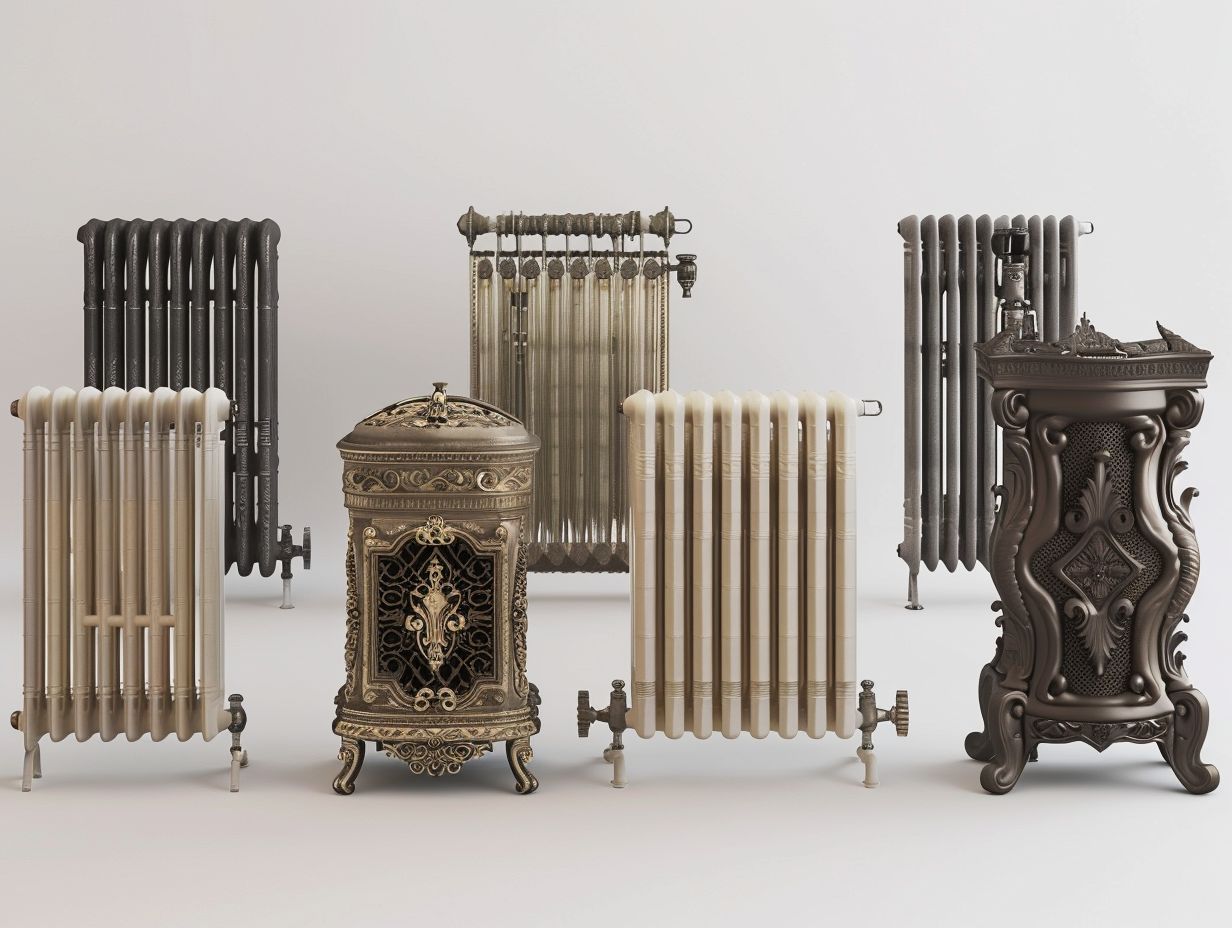
When selecting a traditional radiator, consider the design and style carefully as they can greatly influence the visual appeal of your space. Whether you opt for a classic Victorian design or a vintage-inspired style, the radiator has the potential to become a focal point in the room’s decor.
Your choice of radiator design can have a significant impact on the overall ambience and mood of the room. For instance, a classic design can convey elegance, while a vintage-inspired radiator can introduce a touch of nostalgia.
Victorian-style radiators are often characterised by intricate details that elevate the sense of luxury and sophistication in a room.
By choosing a radiator that complements the interior aesthetics, you can achieve a cohesive and stylish look while ensuring effective heating throughout the space.
Installation Requirements
Understanding the installation requirements of a traditional radiator is essential for ensuring a seamless integration into your space. Factors such as hallway placement, unique configurations, and heating efficiency should be carefully considered during your installation process.
When positioning a radiator in a hallway, it is crucial to consider the dimensions of the space to prevent obstructing walkways or creating safety hazards. Optimal performance can be achieved by installing the radiator in a central location to evenly distribute heat.
It is important to consider the size of the radiator relative to the room it will be heating to ensure efficient operation. Professional installation is recommended to ensure correct positioning, secure fittings, and compliance with safety regulations for a reliable and effective heating system.
Maintenance and Care for Traditional Radiators
To ensure the longevity and efficient operation of traditional radiators, it is crucial to prioritize proper maintenance and care. Regular cleaning, painting, and promptly addressing common issues are key practices to uphold the performance of the radiators.
Cleaning and Painting
Regular cleaning and painting of traditional radiators are essential for preserving their quality and aesthetics. To maintain the classic appearance and ensure longevity of your radiators, it is recommended to utilise high-quality paint, such as reputable brands like Farrow & Ball.
In terms of cleaning your radiators, begin by dusting the surface using a soft cloth or a vacuum cleaner equipped with a brush attachment to remove any dirt or debris. For tougher stains or rust spots, consider utilising a gentle cleaner or a mixture of vinegar and water.
After cleaning, make sure the radiator is completely dry before commencing the painting process. When painting, it is advisable to select a primer specifically formulated for metal surfaces to enhance paint adhesion. Apply the paint in thin, even coats using a brush or spray gun to achieve a smooth and professional finish.
Common Issues and Troubleshooting
Understanding common issues that may arise with traditional radiators and implementing effective troubleshooting measures is crucial for maintaining their performance. Manufacturers offering a lifetime guarantee can provide support for addressing any persistent issues.
Some common problems with traditional radiators include uneven heating, strange noises, and leaks. If you are experiencing uneven heating, bleeding the radiators to release trapped air can often resolve the issue.
If you hear strange noises, this may indicate a build-up of debris, which can be addressed by flushing the system or adding a descaling agent.
While leaks may require professional assistance, checking for loose connections or damaged valves is a recommended initial step. If issues persist, leveraging the manufacturer’s guarantee and support services can ensure long-term maintenance and optimal performance.
Frequently Asked Questions
What are the different styles of traditional radiators?
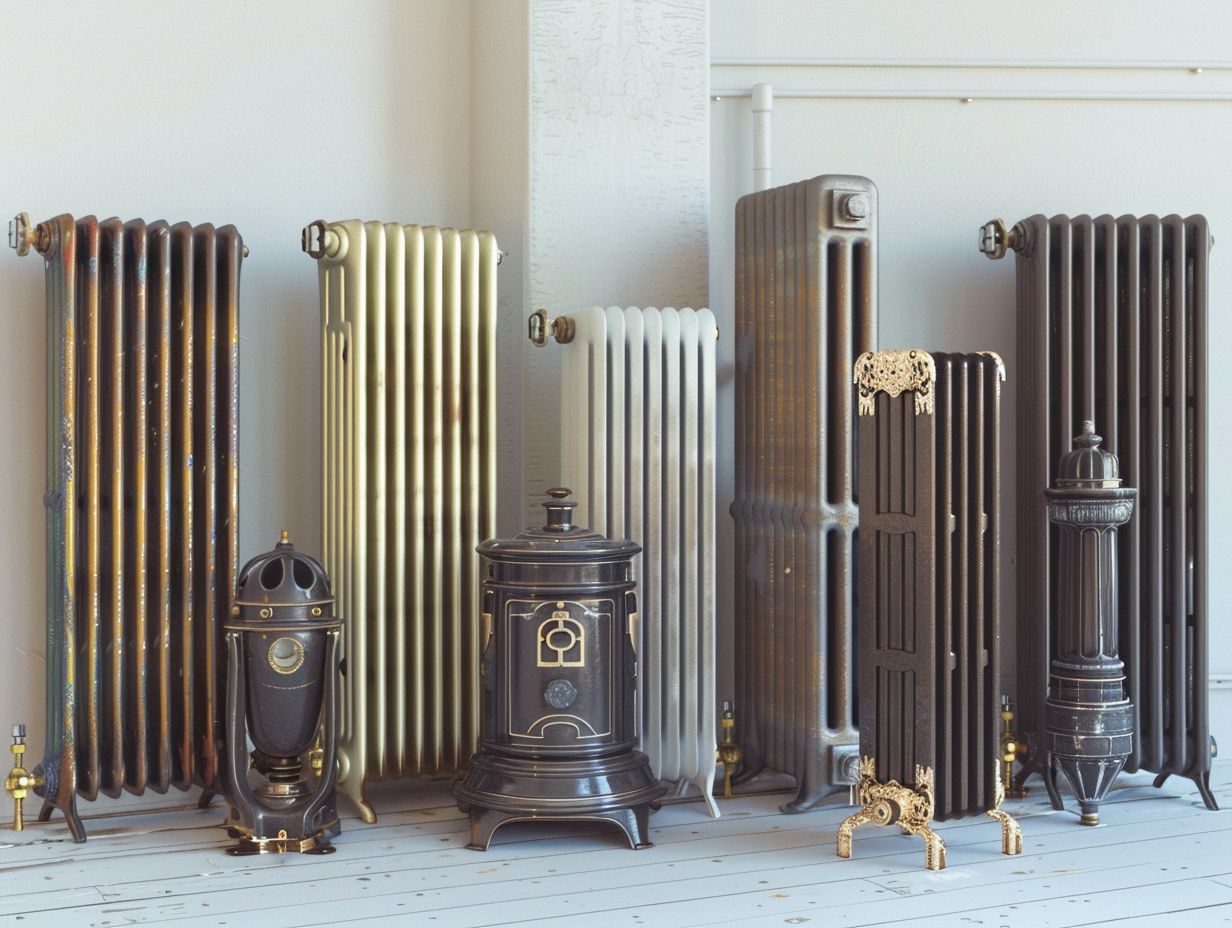
There are several styles of traditional radiators, including column radiators, panel radiators, cast iron radiators, and towel radiators.
What is a column radiator?
A column radiator is a traditional style radiator made up of vertical columns that are connected together. It is often made of cast iron or steel and has a classic and elegant look.
What is a panel radiator?
A panel radiator is a traditional style radiator that is made up of a flat panel with fins or ridges on the back to increase surface area. It is a more modern and compact version of a traditional radiator.
What is a cast iron radiator?
A cast iron radiator is a traditional radiator that is made of cast iron. It is known for its durability and ability to retain heat for longer periods of time.
What is a towel radiator?
A towel radiator is a traditional style radiator that is designed for the dual purpose of heating a room and drying towels. It typically has horizontal bars for hanging towels and is commonly found in bathrooms.
Which style of traditional radiator is best for my home?
The best style of traditional radiator for your home depends on your personal preferences and the type of heating system you have. It is recommended to consult with a professional to determine the best option for your specific needs.

